The Visionaries
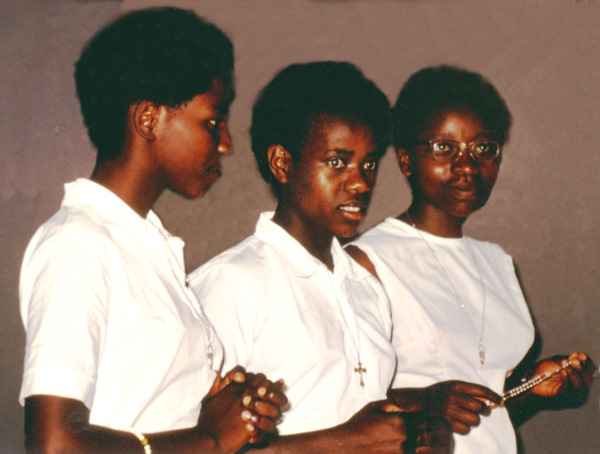 Whenever God called someone for a special mission in the history of salvation, He chose him / her right there, in their actual personal circumstances, and used him / her as he / she is, with his / her personality and character traits, all his / her qualities and personal shortcomings, capabilities and limitations. As a Latin adage says: “Gratia non tollit naturam, sed perficit eam.” ("Grace doesn't do away with nature, but perfects it.")
Whenever God called someone for a special mission in the history of salvation, He chose him / her right there, in their actual personal circumstances, and used him / her as he / she is, with his / her personality and character traits, all his / her qualities and personal shortcomings, capabilities and limitations. As a Latin adage says: “Gratia non tollit naturam, sed perficit eam.” ("Grace doesn't do away with nature, but perfects it.")
The visionaries of Kibeho are no exception from the rule. In this context, Mons. Misago writes in his declaration of June 29th, 2001:
“A visionary, even when recognised as authentic by the church authorities, remains a human being like everyone else, with his/her personal temperament, qualities and shortcomings. As long as he/she is still living on this earth, he/she also remains a sinner, called to
do penance and to grow in his / her life of faith and personal sanctification. It would be imprudent to somehow "canonize"the visionaries of Kibeho while still alive. It would be unfortunate to misuse them as a kind of “good luck charm" (abapfumu). I invite the parents or guardians as well as the friends of the visionaries of Kibeho still alive to moderately treat the visionaries, avoiding exaltation only for them having been favoured by the approved apparitions. You should enable them to normally operate within their surroundings and go about their usual activities. My advice therefore is: Guarantee these visionaries peace and encourage them to lead a fairly disciplined life.”
Alphonsine Mumureke
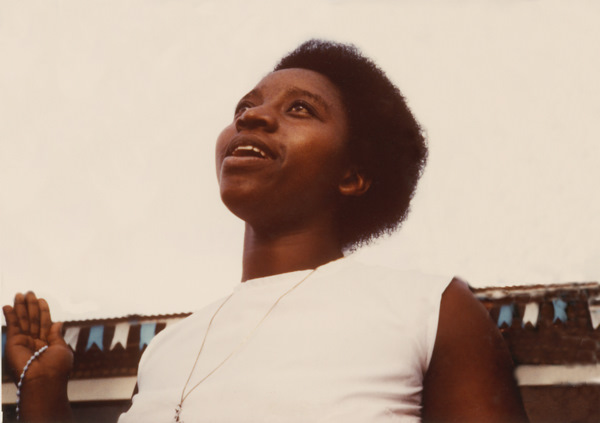 Alphonsine Mumureke was born on March 21st, 1965 in Cyizihira, in the parish of Zaza, Diocese of Kibungo as the daughter of Thaddée Gakwaya and Mary Immaculate Mukarasana. She was baptised on July 27th, 1977 at the age of 12 years. Shortly before the apparitions she was admitted in Kibeho College in October 1981 in order to continue her studies after primary school. Kibeho College, founded in 1967 on the initiative of the parish priest of Kibeho, Father Grégoire Kamugisha, has often changed name in order to conform to the changing programs of the Ministry of National Education. In 1981, when Alphonsine was admitted, the school was called "College de Kibeho"; later in early 1984 it was named "Ecole des lettres de Kibeho" (“Humanistic School of Kibeho”). Since 1998 it goes by "Groupe Scolaire Mere du Verbe" (School of the Mother of the Word).
Alphonsine Mumureke was born on March 21st, 1965 in Cyizihira, in the parish of Zaza, Diocese of Kibungo as the daughter of Thaddée Gakwaya and Mary Immaculate Mukarasana. She was baptised on July 27th, 1977 at the age of 12 years. Shortly before the apparitions she was admitted in Kibeho College in October 1981 in order to continue her studies after primary school. Kibeho College, founded in 1967 on the initiative of the parish priest of Kibeho, Father Grégoire Kamugisha, has often changed name in order to conform to the changing programs of the Ministry of National Education. In 1981, when Alphonsine was admitted, the school was called "College de Kibeho"; later in early 1984 it was named "Ecole des lettres de Kibeho" (“Humanistic School of Kibeho”). Since 1998 it goes by "Groupe Scolaire Mere du Verbe" (School of the Mother of the Word).
The first apparition of Alphonsine took place on November 28th, 1981, her last exactly eight years later, on November 28th, 1989. She completed her secondary school studies at the Humanistic School of Kibeho in July 1989 with a secretary degree (level A2). When asked about her future plans at the time of the apparitions, Alphonsine used to express her wish to join the religious congregation of the Benebikira Sisters. However, the superiors of this congregation hesitated to accept her since the question of the authenticity of the apparitions had not yet been clarified by the church authorities.
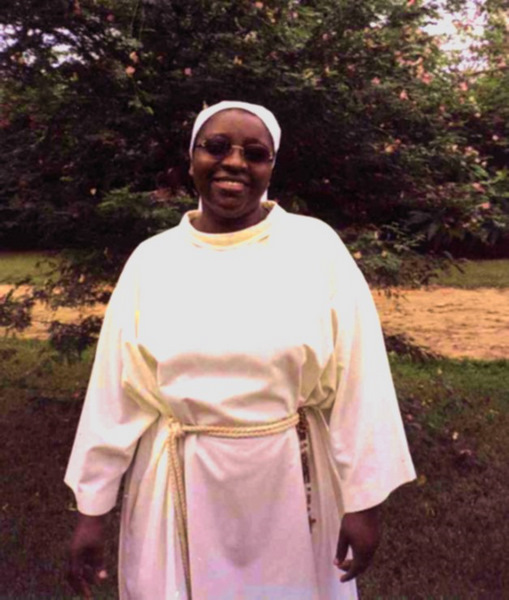
At the end of her studies at Kibeho, Alphonsine was immediately employed by the Diocese of Butare as a secretary and stenotypist at the Diocesan Service Centre for Catholic Education, at that time part of the prefecture of Gikongoro. The Service Centre was led by a priest. Alphonsine kept her job when the Diocese of Gikongoro was founded in 1992 – up to the point in 1994 when she was forced to flee in order to survive the terrible genocide in Rwanda, first to the presbytery of the parish of Gikongoro and then to Bukavu in former Zaire, now D.R. Congo, where she sought refuge at the house of befriended families, who knew her from Kibeho.
With the help of an Ivorian-Congolese (D.R. Congo) family whom she had also met during the time of the apparitions at Kibeho, she she continued her tragical journey up to Abidjan at Ivory Coast a few weeks later and got into contact with Father Raymond Halter, a Marian priest who knew her since her last apparition on November 28th, 1989.
He became her spiritual director and took care of her during her stay at Ivory Coast. He looked after her until his death in December 1998. At that time, Father Joseph Bezel, parish priest in France and a dear friend of Father Raymond Halter, helped Alphonsine to obtain a scholarship for the Business School of Castaing in Abidjan ,where she signed up for a three-year-programme of Business Secretary Education (from 1995/96 to 1997/98). For reasons mentioned below, she was unable to complete her studies.
Father Halter's successor, Father Basile Mobio Gbangbo, an Ivorian diocesan priest from the Archdiocese of Abidjan, serving in the Sacred Heart Parish of Abobo. Father Gbangbo seems to have played a major role in Alphonsine’s life as a spiritual advisor, also having influence on the Archbishop of Abidjan, Cardinal Bernard Agré, with whom Alphonsine was able to get into contact. The Bishop of Gikongoro wrote a letter of recommendation to Cardinal Agré and, following the advice of Father Basile, Alphonsine left the Business School to join the Catechetical School, affiliated to the Catholic University of West African in Abidjan.
At the same time, she was aspirant in the order of Saint Claire. After her graduation from theology with a specialization in catechesis in June 2003, she entered the monastery Sainte Claire in Abidjan (Poor Clares). She received the religious habit at the beginning of her novitiate on July 26th, 2004. The temporary religious profession ceremonies took place on July 15th , 2006. The young professed was given the name of “Alphonsine of the Glorious Cross ".
Alphonsine's are no longer alive. Her father, Thaddée Gakwaya was assassinated in September 1984. Her mother, Immaculate Mukarasana, died some a few years after the genocide of 1994.
Nathalie Mukamazimpaka

Nathalie Mukamazimpaka was born as the daughter of Laurent Ngango and Gaudence Mukabaziga in 1964 in Munini in the current district of Nyaruguru, in the parish of Muganza, Diocese of Gikongoro. She was baptised on February 2nd, 1968 at the age of 4.
At the time of the apparitions she attended Grade 4 of the elementary level at Kibeho College. Although she had only one year left in order to obtain a diploma level D5 that would qualify her as a primary school teacher, Nathalie did not complete her secondary school studies.
The first time that the Virgin Mary appeared to Nathalie was on January 12th, 1982, the last time on December 3rd, 1983. The message Nathalie received was special due to it's content on expiatory suffering and incessant prayer for a world which hastens to its ruin and is at risk of falling into the abyss. On June 24th, 1982, the Blessed Virgin asked Nathalie to remain at Kibeho and, until further notice, fully engage herself in prayer life and mortifications for the salvation of the world.
So, ever since July 1982, Nathalie has been permanently staying close to the site of the apparitions at Kibeho. She justifies this by referring to personal messages from the Blessed Virgin, whom she calls "Umubyeyi", mother. This situation was subject of controversial public discussion, led by the investigation commissions as well as by temporary observers.
Many a time, the visionary was confronted with all kinds of questions, some of which were very personal or even offending. Research was carried out in her family and her native region and there are specific reports and testimonies on this subject. In the end, they could not prove the visionary and her position wrong. On the contrary, the successive local ordinaries were in favour of her. They even wished that her case might one day provide the basis for new perspectives.
The call to expiatory sacrifice being one of the major lines of the message of Kibeho, Nathalie always tries her best to live this message. At the time of the civil war and genocide of 1994, she remained at Kibeho, at the scene of two terrible massacres. She witnessed acts of murder and genocide against innocent people. Most probably this caused he to reread the message of the apparitions (and particularly that of August 15th, 1982) with great pain, trying to establish a link between what the Virgin Mary had said and the tragedy which descended upon Rwanda and her neighbouring countries.
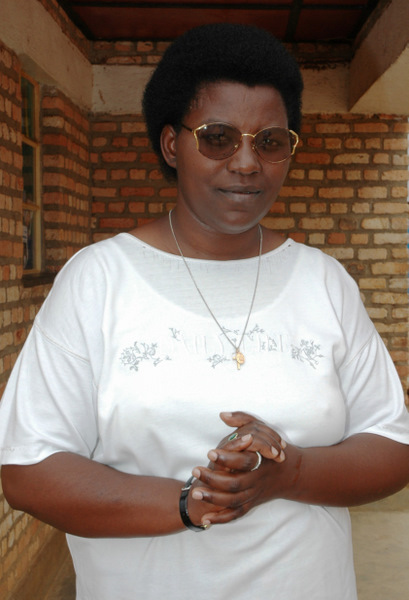
In early July 1994, Nathalie was forced to leave Kibeho at the request of the Bishop, in order to get into greater safety. She temporarily stayed at Bishop’s residence in Gikongoro. From there, she continued her escape up to Bukavu in former Zaire together with many other refugees, including priests and religious of all ethnic groups. For several months, she was hosted at the monastery of the Trappistines of the Abbey of Our Lady of Clarity located not far from Bukavu city. Lateron, she was hosted in a community of the Daughters of Mary Queen of the Apostles Sisters up to May 1996. It was from there that she was urgently transferred to Nairobi for medical care. She was able to return to Rwanda in early December 1996.
Fortunately, the Benebikira Sisters had just come back to Kibeho and reopened their convent, the school and the health centre. This encouraged Nathalie to return home after two years of absence. Ever since, she has been continuing her generous work for the Marian shrine and committing herself to praying with the pilgrims. It is often she herself who welcomes individual pilgrims and assists them in anything they need or refers them to the chaplain if necessary.
From time to time, relatives and Christians from her home parish, Muganza, come to visit her. Nathalie's father, Laurent Ngango is still alive and stays about 10 km from Kibeho. Her mother, Gaudence Mukabaziga, died on Octobre 17th, 1998 from malaria.
Marie Claire Mukangango

Marie Claire Mukangango was born in 1961 as the daughter of Basera and Véronique Nyiratuza in Rusekera, in the present district of Nyamagabe, in Mushubi parish, Diocese of Gikongoro. She was baptised on August 12th, 1966 at the age of 5. At the time of the apparitions she attended Grade 4 of the elementary level at Kibeho College.
As visionary, Marie Claire is especially known for the message concerning the Rosary of the Seven Sorrows of the Virgin Mary which goes hand in hand with an urgent call to repentance: “Repent, repent, repent! Convert while there is still time”, the Virgin Mary said to the world through Marie Claire.
Marie Clarie's first apparition took place on March 2nd, 1982, her last on September 15th, 1982, after a period of 6 months and 15 days. She successfully completed her secondary school education in July 1983 at Kibeho College with a diploma (level A3) which qualified her for primary school teaching. Hence, starting from September 1983, she first taught in her home parish Mushubi and thereafter in Kigali from September 1987.
On August 22nd, 1987, Marie Claire celebrated her church wedding to Elie Ntabadahiga, a member of Mushubi parish. Elie was studying at the university while working as a journalist at Orinfor (Rwandan Office of Information) but was appointed to the Primer Minister's Office Services just before the genocide of 1994. Marie Claire and Elie formed a happy couple. Unfortunately, they did not have a child, despite their strong desire to start a family.
They resided in Gatsata compound in Kigali, at the road to Byumba. There, they were caught off guard by the genocide of 1994. Together with many other war displaced, they were taken towards Byumba, which was supposed to be a secure zone. There, a great number of unarmed civilians was slaughtered. The exact date and circumstances of their death are not (yet) elicited. Witnesses say that Marie Claire was killed in an attempt or defend or to find her husband kidnapped and lead together with other victims to an unknown destination.
Prétendues Voyantes
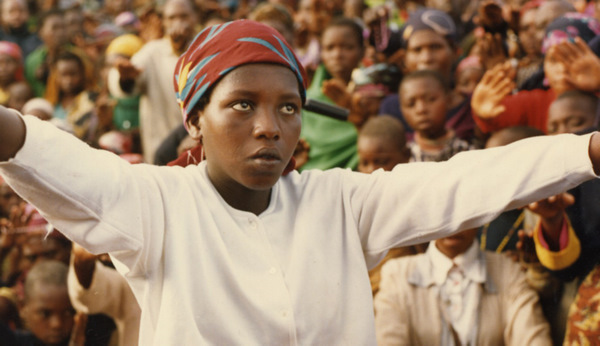
Even if the three visionaries mentioned above are the only ones officially approved by the Catholic Church, they were not the only ones who claimed to have been favoured by apparitions at Kibeho. After Marie Claire, the third visionary in the chronology of the apparitions of Kibeho, there were several other girls and one boy, all of them of different age and various levels of education.
The number of supposed visionaries listed in the file of the commissions of inquiry reached 14 on November 28th, 1982, one year after the forst apparitions; on November 28th, 1983 they were 33 already. Some claimed to have seen Virgin Mary, others wanted to have seen Jesus; still others said they saw the Virgin Mary on one day and Jesus on another day.
The situation became more and more confusing and it was therefore difficult for the church authorities to find the truth. Moreover, chances are that some people tried to talk to these “visionaries” and maliciously make them their instruments.
In its discernment, the Church installed two commissions in 1982, one medical and one theological, which should investigate the events of Kibeho using scientifically valid methods. The two commissions started their work immediately after their creation. The exceptional long duration of the apparitions did not discourage the members of the two commissions, who worked with great zeal and the desire to examine the events impartially and without bias, investigating without rush but with patience and calm.
The two commissions worked according to the "Norms for Judging Alleged Apparitions and Revelations", published by the Congregation of the Doctrine of Faith on February 24th, 1978 in Rome.
Given the large number of the supposed visionaries, who had never had apparitions in a group and thus had to be investigated one by one, the commissions had to create methods of more efficiency in order to get on with their work. Thus, they gave priority to the first eight supposed visionaries: Those of the first year of the apparitions at Kibeho, i.e. between November 28th, 1981 and November 28th, 1982. This choice, however, was a working hypothesis, not a presumption of authenticity for such a large number of visionaries. Thus, these first eight "visionaries" were chosen as a sample to be investigated in a specific way, without losing sight of the other supposed visionaries.
The mentioned commissions produced numerous reports which were submitted to the Bishop of the Diocese of Butare to which Kibeho still belonged at that time. After the creation of the Diocese of Gikongoro in 1992, everything connected with the apparitions of Kibeho was transferred to the new diocese led by Mons. Augustin Misago, a former member of the theological commission himself. The two commissions continued their task as usual and were reinforced with some new members.
The two commissions completed their investigation twenty years after their creation. Their conclusions showed that from the eight supposed visionaries taken as samples for investigation, only three showed the required criteria of credibility and confidence in what concerns the apparitions of Kibeho.
It is in this context that Mons. Augustine Misago, Bishop of Gikongoro declared the final judgement on the event of the apparitions of Kibeho on June 29th, 2001, in agreement with the members of the two commissions and with the Magisterium of the Universal Church in Rome as well as with the Episcopal Conference of Rwanda.
In this Declaration, the Bishop of Gikongoro specifies without meandering:
1 . Yes, the Virgin Mary appeared at Kibeho on November 28th, 1981 and in the months that followed. There are more reasons to believe in the apparitions than to deny them. Only the three initial testimonies merit being considered authentic; they were given by Alphonsine Mumureke, Nathalie Mukamazimpaka, and by Marie Claire Mukangango. The Virgin appeared to them with the name "Nyina wa Jambo", that is "Mother of the Word", which is synonymous to "Umubyeyl W'iamna" that is, "Mother of God", as she herself explained. The visionaries said to have seen her sometimes with joined hands, sometimes with outstretched arms.
2 . Various reasons justify the choice by Our Lady of these three visionaries already approved as visionaries. These witnesses, historically linked, were the only ones on the scene for some months, at least up to June 1982. They are the ones who made Kibeho known as a place of apparitions and pilgrimage causing crowds of people to flock there.
What is more important is that Alphonsine, Nathalie and Marie Claire corresponded satisfactorily to all the criteria established by the Church in the matter of private apparitions and revelations. In contrast, the evolution of the alleged subsequent visionaries, especially after the apparitions were over, reflects disquieting personal situations, which have reinforced the existing reservations in regard to them and discouraged ecclesiastical authorities from proposing them to the faithful as points of reference.
The Bishop of Gikongoro continues:
3 . In the evaluation of the facts and the messages, only the public apparitions are taken into consideration. Public are those apparitions that take place in the presence of various testimonies, which does not necessarily mean a crowd.
The most active period of these apparitions ended with the year 1983. Everything said or done after that date at Kibeho did not bring anything new with respect to what was already known, from the point of view of the messages and of the signs of credibility. This is also valid for Alphonsine who continued to attract many people up to the end of her apparitions.
[…]
5 . In the case of the three visionaries named above, who are at the origin of the fame of Kibeho, nothing that they said or did during the apparitions is contrary to Christian faith and morals. Their message is in conformity with the Sacred Scripture and the living Tradition of the Church.
[...]
7 °. Among the signs for the credibility of the apparitions, the following should be mentioned:
1. the good mental health, the human balance, the attentiveness and the sincerity of the visionaries certified in the conclusions of the medical commission, comprising the opinion of a psychiatrist;
2. the respectful and sincere climate in which the events took place;
3. the absence of sensationalism in the habit of the visionaries, which indicates that the apparitions did not occur neither automatically nor controlled by them;
4. the conformity of the visionaries' messages and behaviour;
5. the tangible character of the ecstasies, according to the examinations of the commissions free of mental disorder or hysteria;
6. the genuineness and simpleness of the dialogues in the apparitions;
7. the fact that parts of the message were expressed in a more eloquent way than the visionaries would usually be able to due to their culture and religious formation;
8. the phenomenon of the "mystical journey" first of all for Alphonsine ( on March 20th, 1982) and then for Nathalie (on October 30th, 1982);
9. the frightening visions of August 15th, 1982, which proved to be prophetic due to the human dramas in Rwanda and throughout the country of the Great Lake region in recent years;
10. the extraordinary fasting of Nathalie during Lenten season 1983, rigorously monitored by the medical commission, whose members did not consist of (practicing) Catholics only;
11. the content of the message, remaining consistent, relevant, and orthodox;
12. the spiritual fruit already borne by these events, all across the country and even abroad;
(Mons. Augustin Misago, Declaration bearing the final judgement on the event of the "Apparitions of Kibeho", n ° 14.)




